Remember that the label (arrow) on the piston head must face the front of the engine (camshaft drive).
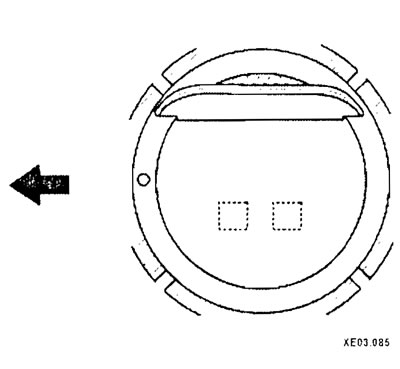
Wipe the cylinders with a clean, lint-free cloth.
Lubricate the piston rings and then install a ring compressor on the first piston to be installed. If there is no compressor, a suitable hose clamp can be used.
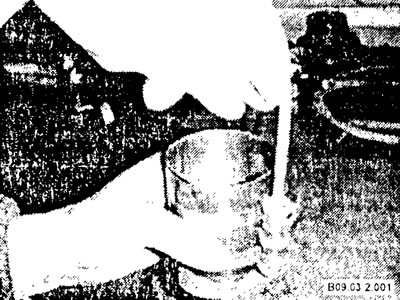
Devices used to install pistons with rings in engine cylinders
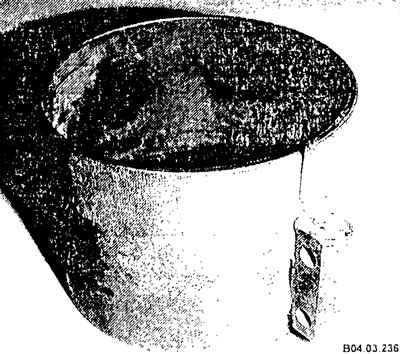
Universal (adjustable) bushing - general view
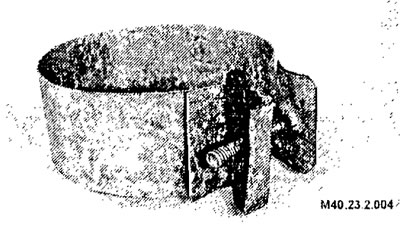
The simplest device made from a strip of metal (by clamp type)
Connecting rod bearings - installation on the crankshaft
Before installing the pistons with connecting rods, the walls of the grooves of the block must be thoroughly cleaned, and the crankshaft is installed in place.
Remove the cap from connecting rod number 1 (they must be marked when removed).
Clean the backside of the new upper bearing shell, then put it back into place on the connecting rod. Make sure the key on the bushing fits into the groove on the connecting rod. Do not hammer the bushing or scratch the bearing surface. Do not lubricate the bearing yet.
Clean the back side of the second bearing and install it in the connecting rod cap. Make sure the liner key is seated in the notch in the cap, but do not apply any lubricant yet.
Pull pieces of plastic or rubber tubing over each connecting rod cap bolt.
Orienting the piston so that the arrow on its top points forward (in the direction of the camshaft drive), carefully insert the piston with the connecting rod into the first cylinder.
Gently press down on the top of the piston with a piece of wood while guiding the end of the connecting rod into its place on the crankshaft journal. Work slowly and if you feel resistance stop immediately. Find out the cause and eliminate it. In no case do not press hard on the piston - you can damage the seats.
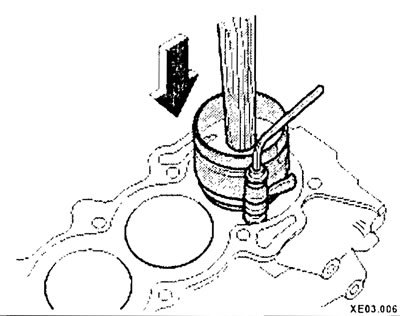
After the piston and connecting rod are installed, the connecting rod bearing oil clearance must be checked before the connecting rod is finally screwed into place.
Cut off a piece of the proper size plastic to measure the clearance slightly shorter than the width of the connecting rod bearing and place it on the number 1 connecting rod journal parallel to its axis.
Clean the surface of the connecting rod bearing cap, remove the protective tubes from the connecting rod bolts, and install the connecting rod cap.
Install the nuts and tighten them to the required torque in three stages. Do not rotate the crankshaft while doing this.
Unscrew the nuts and remove the connecting rod cap, being careful not to damage the plastic.
Compare the width of the crushed gap plastic to the scale on its bag to determine the gap. Compare the obtained value with the technical data.
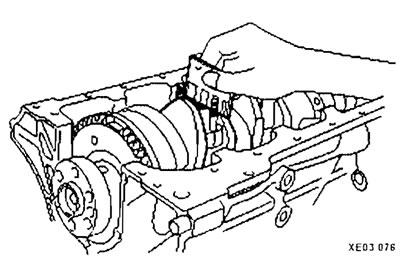
If the clearance is not correct, the bearing shells may be the wrong size. But before replacing the bearing shells, check for dirt or oil between the shells and the connecting rod or cap. Also, check the diameter of the shaft journal. If the width of the plastic to measure the gaps is different at different ends of the strip, the shaft journal may be tapered and must be reground.
Final installation of the connecting rod
Carefully scrape all traces of plastic for measuring clearance from the surface of the shaft journal and bearing, being careful not to scratch the bearing.
Make sure the bearing surfaces are perfectly clean and apply an even spray of lubricant to both bushings. You will have to push the piston into the cylinder bore to access the connecting rod bushing - remember to put the protective tubes on the connecting rod bolts first.
Slide the connecting rod onto the shaft journal, remove the protective tubes from the connecting rod cap bolts, install the cap and tighten the nuts in three stages to the required torque.
Repeat the above procedure for the remaining pistons and connecting rods.
Check the piston group assembly.
After all pistons and connecting rods are installed, turn the crankshaft several times by hand and check if it is seizing.
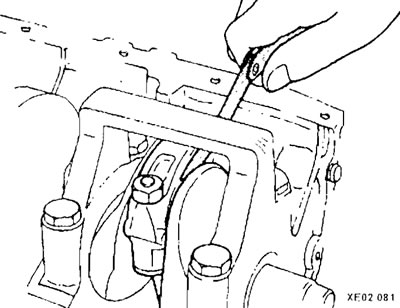
Check the play of the connecting rods.
Compare the measured backlash with the technical data. If the backlash was correct before disassembly, and old connecting rods and crankshaft were used, then it should remain within the normal range. If new connecting rods or a new crankshaft have been installed, the clearance may not be correct. In this case, it is necessary to remove the connecting rods and give it to the workshop for machining.
